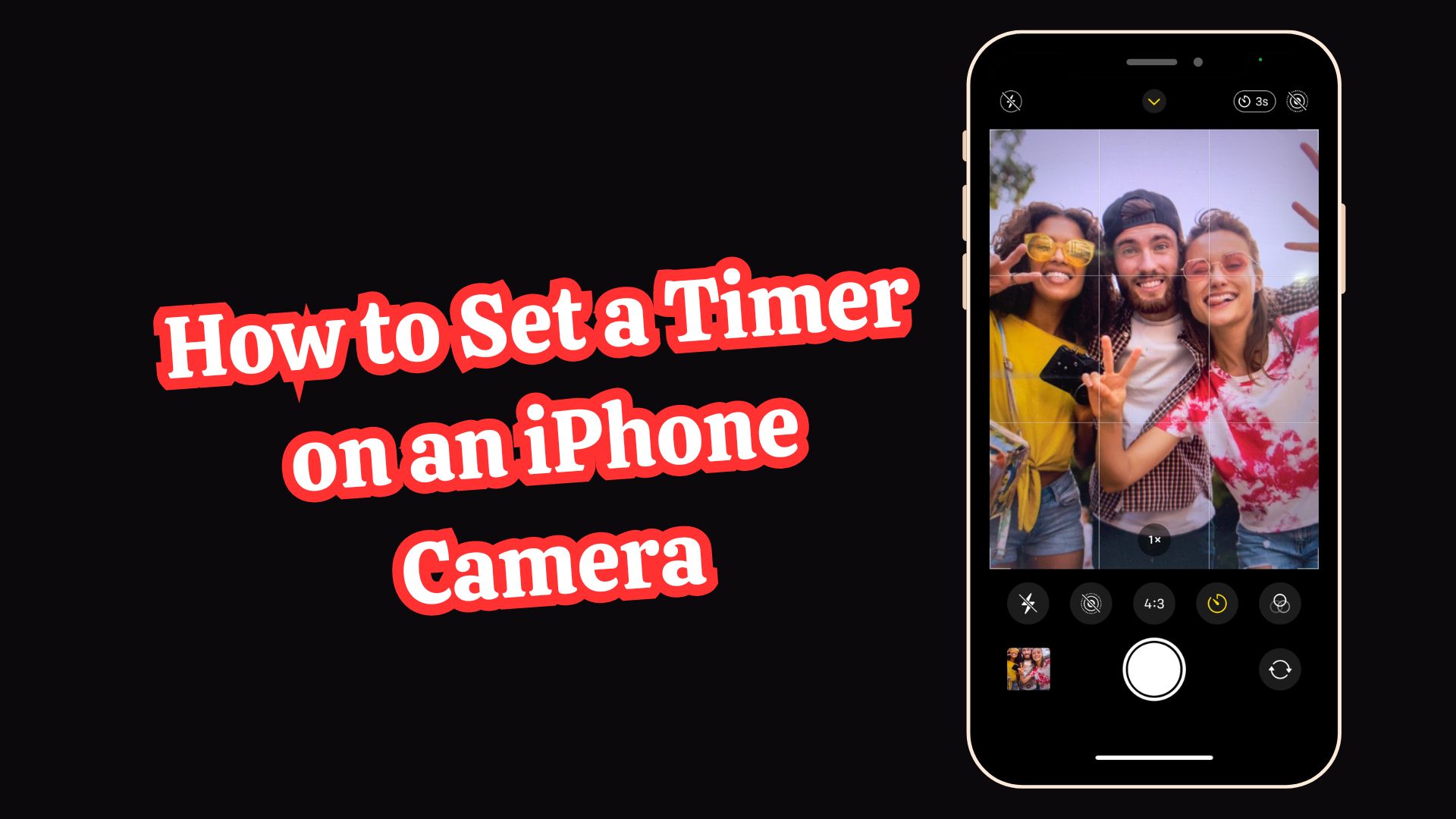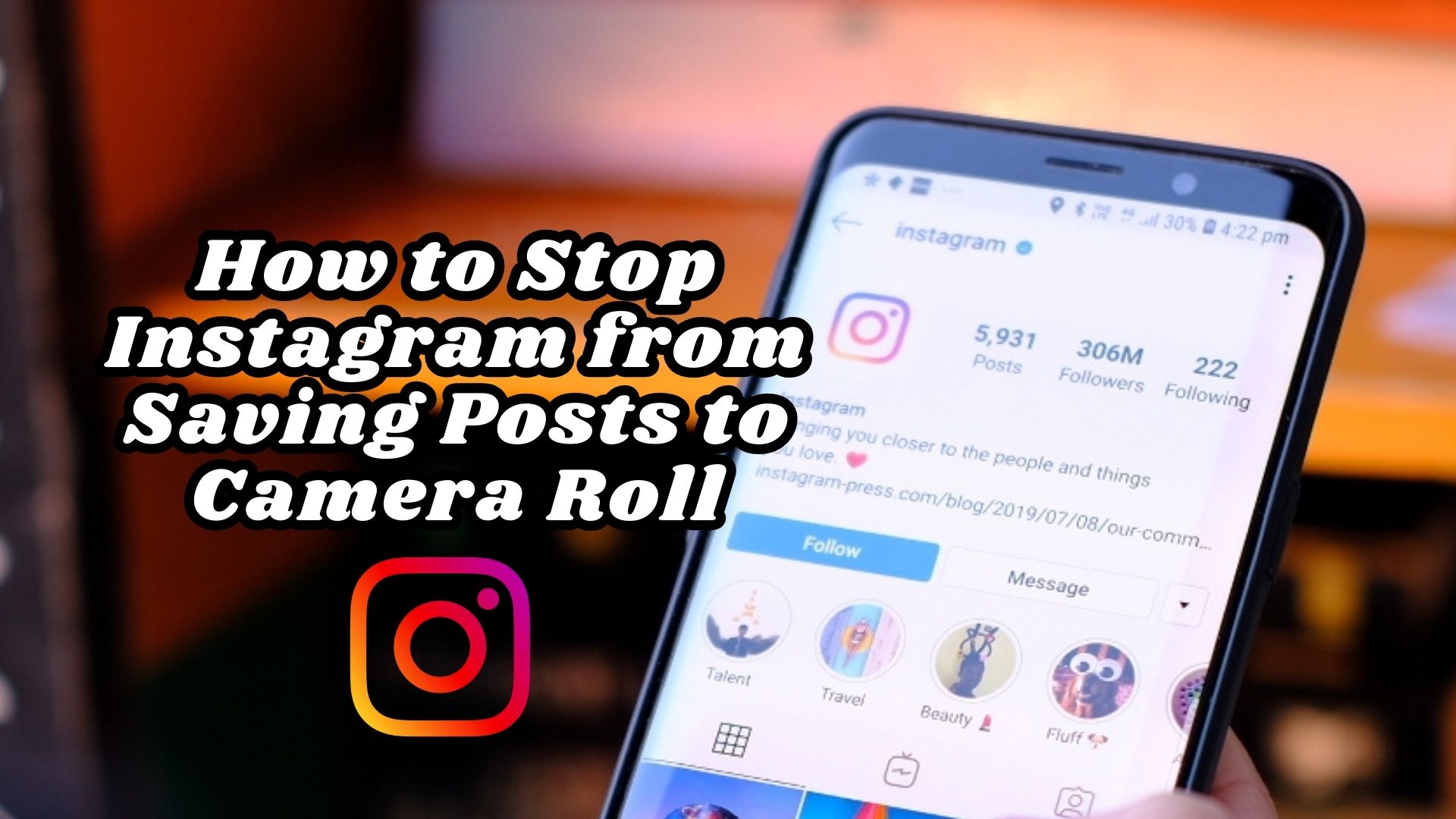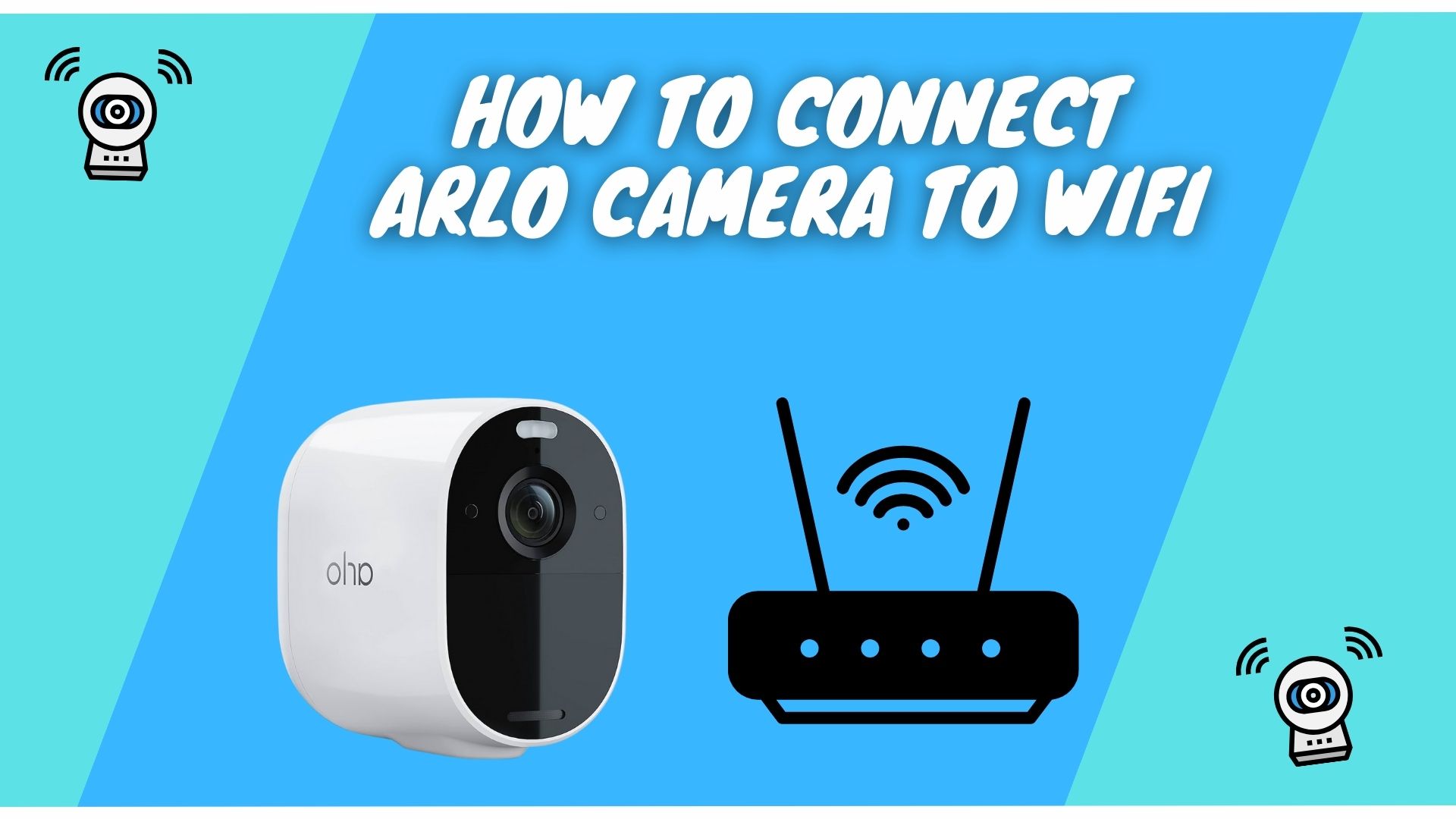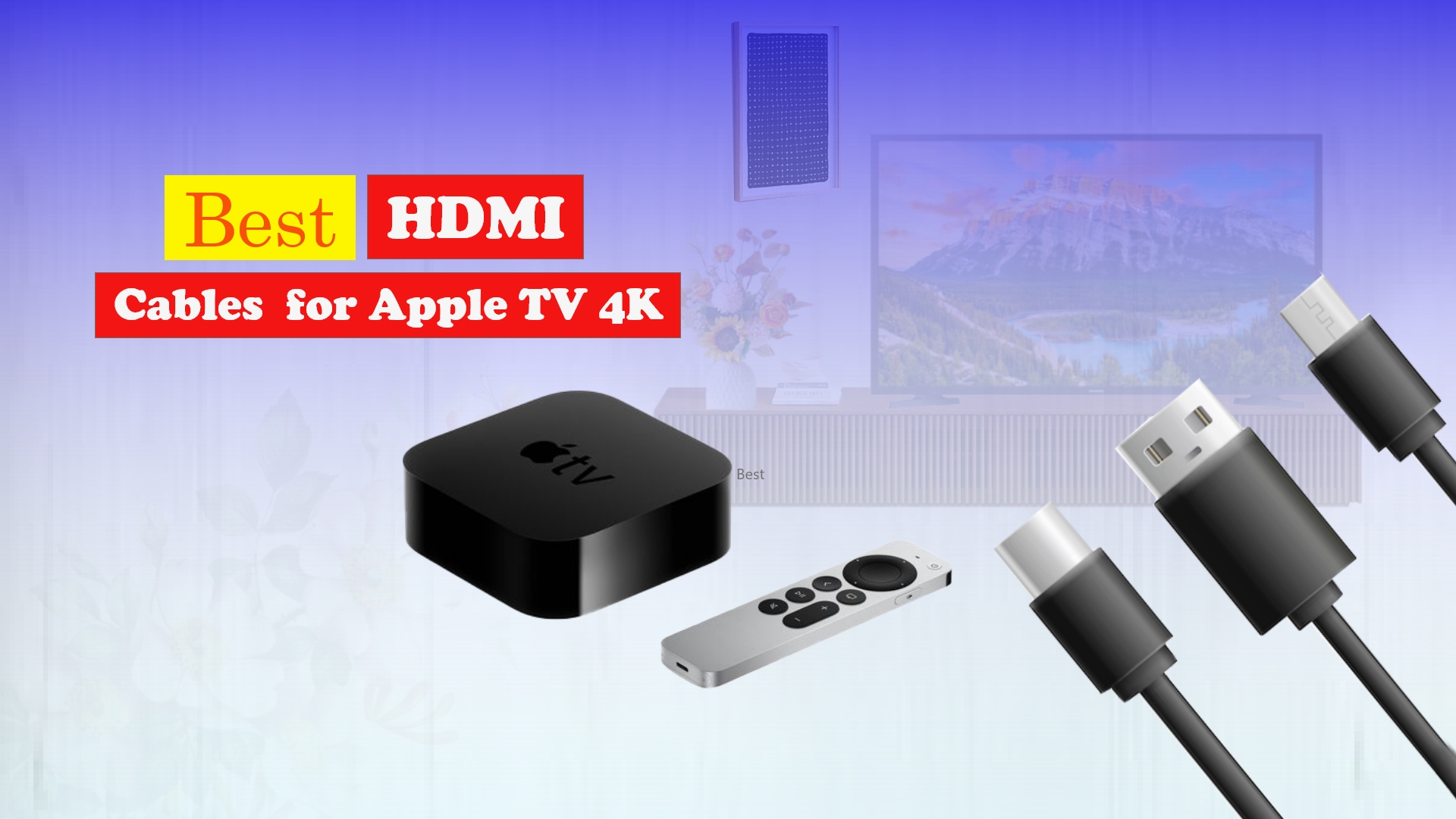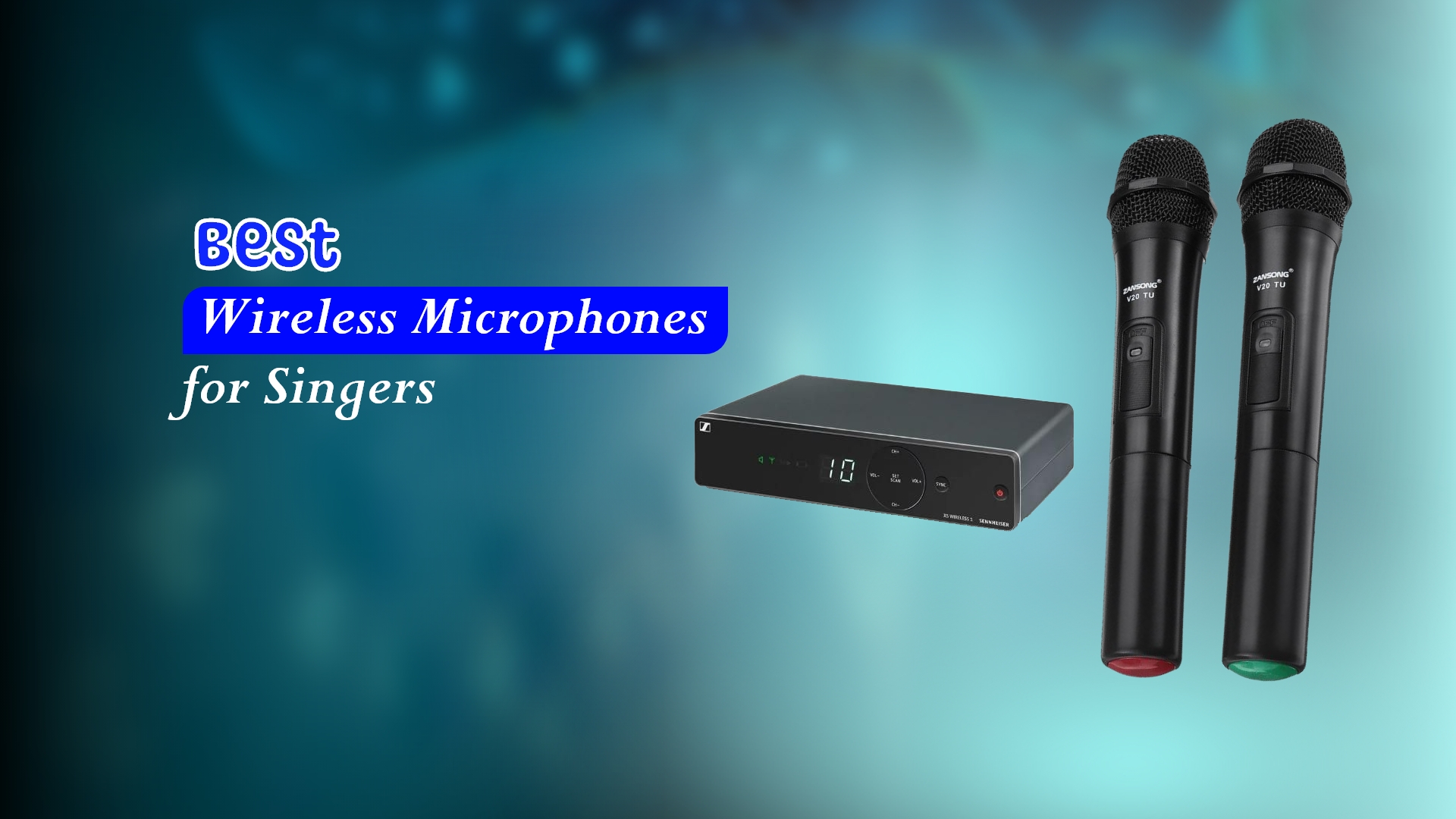6 Best Wireless Microphones in 2023
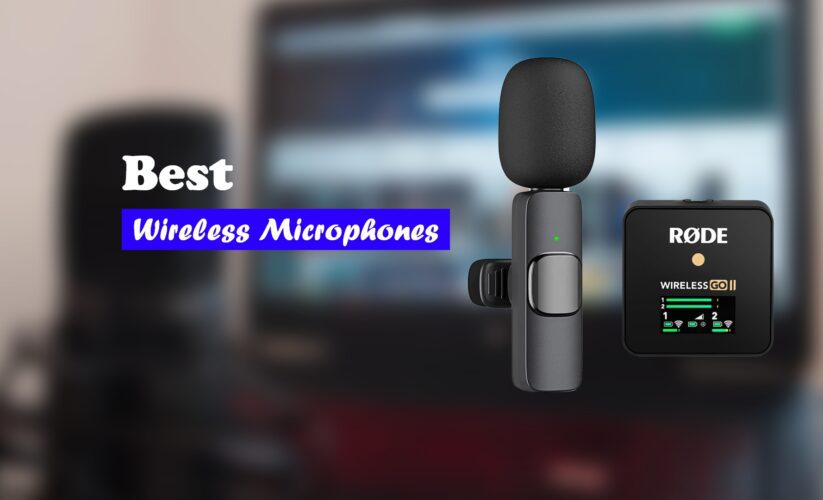

For a vlogger or a content creator of any sort, having a good wireless microphone is essential to ensure high-quality content. A wireless microphone also gives you the freedom to move around without being tethered to any device. Yet when there are so many wireless microphones available on the market, how do you pick the best one for your needs? In this detailed article, we’ll be reviewing 6 of the best wireless microphones in the market.
We will compare their features, design and build quality, pros, cons, and value to help you determine which product suits your needs best. We have options for everyone, whether they are more affordable, more expensive, or somewhere in between. So, continue reading this article to find out more.
The buying guide for the best wireless microphones
With the help of a wireless microphone, you can transmit sound or voice without the hassle of cables. A wireless microphone kit is primarily made up of a transmitter and a receiver. The transmitter is usually worn by the person performing or speaking, and it sends the audio signal wirelessly to the receiver, which is connected to a sound system or a recording device.
The best wireless microphones offer high-quality sound, long battery life, and a reliable connection. With the right wireless microphone, you can enjoy freedom of movement and clear sound quality. So, here we’ve shared some important points you should keep in mind when looking for the best wireless microphone.
Sound Quality
When picking out a wireless microphone, sound quality is definitely something to keep in mind. It is the quality of the sound that the wireless microphones capture and transmit. You need to make sure you get one with a good signal-to-noise ratio and low distortion for the best sound. That way, you can be sure your audio will sound great.
Range
The range of the wireless microphone is another important consideration you should keep in mind. If you’re going to be using the microphone in a large auditorium or stage, then the receiver and the transmitter parts of the microphone will be far apart. So, you’d need a microphone that supports long-range. But if it’s just a small room, a shorter range should do the trick. Also, keep in mind about any potential obstacles or interferences that could mess up your microphone’s range.
Frequency range
The microphone’s frequency range should also be taken into account because it may affect the microphone’s ability to pick up particular sounds or frequencies. Certain microphones might have a wider range than others, which can be great for recording a broad range of sounds. Similarly, the kinds of sounds that can be captured by a microphone with a smaller frequency range are limited. Ensure you get a microphone with the right frequency range to suit your needs, whether for vocals, instruments, or environmental sounds.
Battery Life
It’s worth considering a wireless microphone’s battery life before you buy it, especially if you’re planning to use it a lot. Make sure to check the specifications to see which models have a longer battery life. And it’s a good idea to consider the type of battery too – some require disposable ones, while others are rechargeable, which could save you money in the long run. If you’re likely to be using the microphone a lot, it might be worth spending a bit extra to get one with longer battery life and rechargeable batteries.
Durability
It’s really important to think about the durability of the microphone, especially if you’re going to be using it a lot. You need to look for well-built microphones that use shock-resistant materials in their construction. This is to ensure it doesn’t break because of accidental drops or impacts. Furthermore, getting a microphone that offers a warranty doesn’t hurt so you don’t have to worry about it if something goes wrong.
Accessories
When buying a wireless microphone, check for what additional accessories you are getting other than the microphone itself. Some microphones include accessories like a carrying case, windscreen, or clip-on attachment that can be helpful in a variety of settings. If the microphone doesn’t come with these extras, you might have to buy them separately. So, when planning your budget for your wireless microphone, it’s important to account for the price of these accessories.
List of the best wireless microphones
- Shure GLXD24/SM58
- Rode Wireless Go II
- Shure BLX288/PG58
- Sennheiser EW 100-835S
- Boya BY-XM6-S2
- DJI Mic
Shure GLXD24/SM58
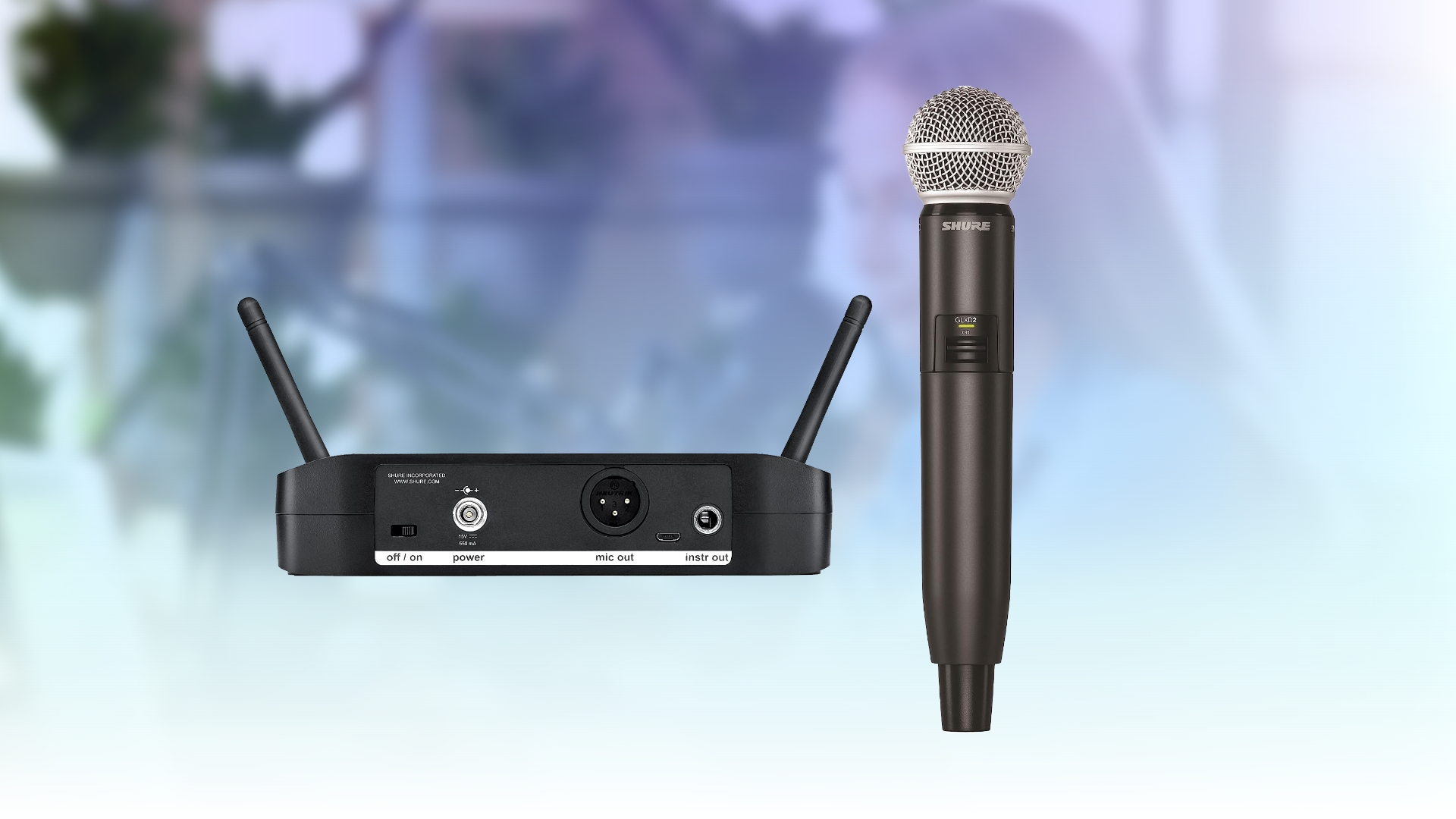
This Shure digital wireless microphone system has got it all – it includes the legendary SM58 vocal cardioid microphone with a GLXD2 transmitter and a GLXD4 receiver. It’s no surprise that the SM58 has been a staple in the music industry for years – it’s known for its crisp and powerful sound. And the GLXD2 transmitter and GLXD4 receiver take it to the next level with superior sound quality and reliable performance.
Moreover, this wireless Shure microphone system can operate with four compatible systems simultaneously, and it can be stretched up to eight under certain conditions. This feature is particularly useful for larger performances where multiple microphones are needed. Its range is pretty impressive, too, with a max line-of-sight of 200 ft. Though, it’s worth bearing in mind that the exact range can vary depending on the environment and any objects that might disrupt the signal.
The GLXD2 transmitter has an ergonomic design, a sturdy metal construction, and a secure on/off switch. The wireless transmitter can run continuously for 16 hours with the help of its rechargeable lithium-ion battery. The accompanying GLXD4R receiver also has a metal body along with detachable antennas and an LCD screen to show battery life, frequency, and volume level.
Additionally, this GLXD4 receiver has got an intelligent frequency management feature that makes sure you get stable and clear sound even when there’s a lot of wireless activity around. It can figure out the best open frequencies to use and switch to them automatically, minimizing any chances of disruption or connection issues.
Furthermore, the system operates in the globally unlicensed 2.4 GHz frequency band, which means it can be used without any special permits or licenses in most countries. However, Shure also offers a dual-band variant of this microphone system that supports 2.4 GHz and 5.8 GHz frequency bands.
Verdict
The Shure GLXD24/SM58 is a dependable and versatile digital wireless microphone that can handle pretty much anything. Whether you’re using it for live vocals or singing at a karaoke party, it gives off a great sound and is super easy to use. A downside of this microphone system is that it can be a bit pricey, which makes it unsuitable for simple uses like podcasts, interviews, or small presentations.
Overall, the GLXD24/SM58 microphone system is the best Shure wireless microphone system. And it has one of the best wireless microphones for singing.
Shure GLXD24/SM58 Specifications
- Polar Pattern: Cardioid
- Connectivity: Wireless
- Battery Life: 16 hours
- Max Operating Range: 200ft
- Frequency Response: 50Hz – 15kHz
- Mic Impedance: 150Ω
Pros
- Legendary SM58 microphone
- Great Sound quality
- Fast charging
- Long battery life
- Automatic and intelligent frequency management
- Easy-to-setup and use
Cons
- Comparatively pricy
What’s included in the box?
GLXD4 Wireless Receiver | GLXD2 Handheld Transmitter with SM58 Cardioid Microphone | 1 X Microphone Clip | PS42US Power Supply | SB902A Rechargeable Lithium-Ion Battery | USB Charge Cable | Carrying Case
Rode Wireless Go II Dual Channel
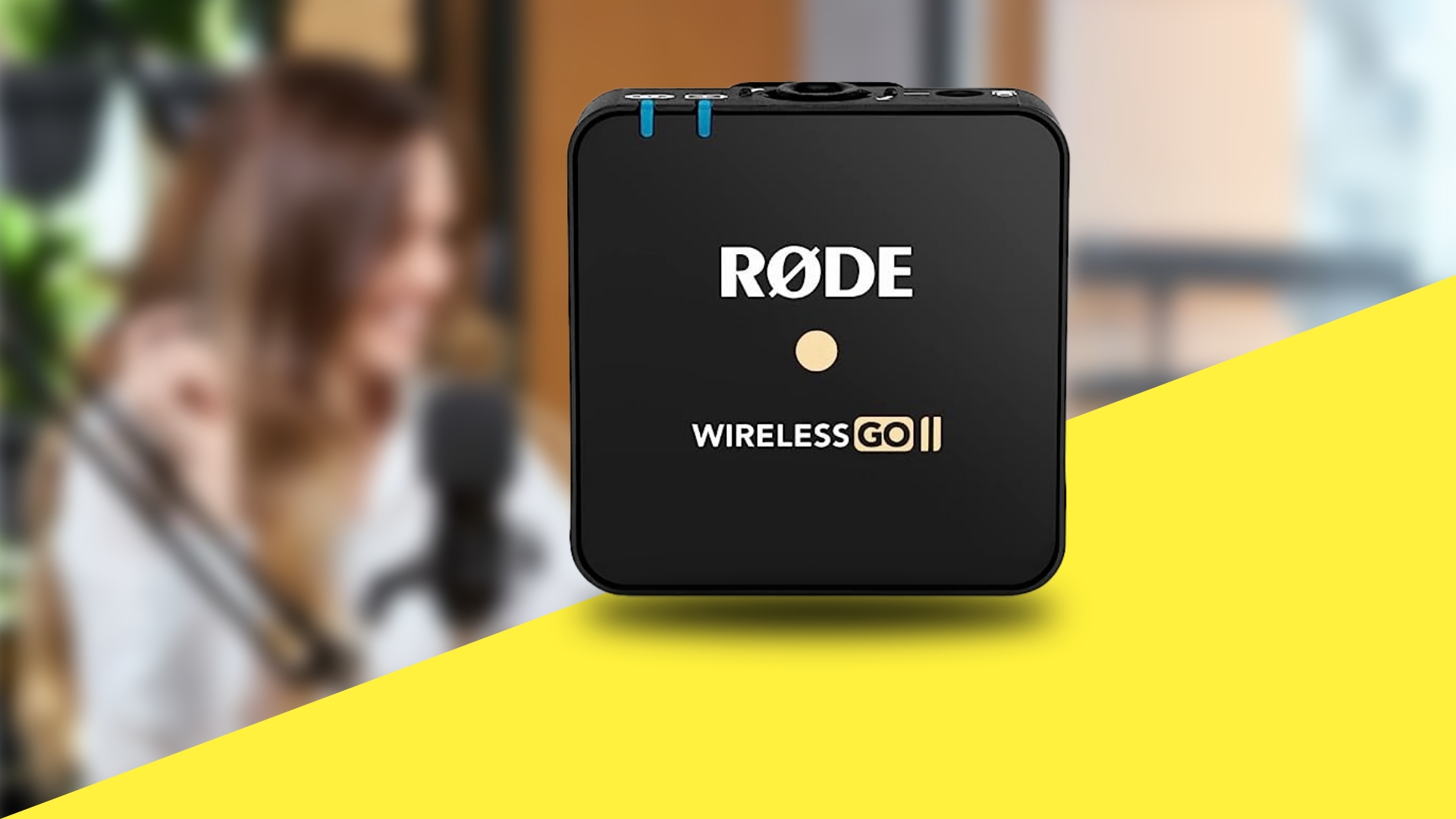


The Rode Wireless Go II is an awesome upgrade to the already popular Wireless Go microphone system. It has got some great new features like dual-channel recording, better range, built-in recording, and a digital output for your smartphone or computer. This dual-channel wireless microphone system provides a convenient and versatile way to simultaneously record two sound sources.
A cool thing about the Wireless Go II is that it also comes in a single-channel microphone system. Meaning you get one transmitter instead of the two that come with the dual channel system, and obviously, you’ll also get one receiver. As a result, this makes it a great choice for solo content creators or those who only need to record one sound source at a time.
This wireless lavalier lapel microphone system includes two transmitters and a single receiver that can be clipped onto clothing or mounted on a camera, smartphone, or computer. With 128-bit encryption and Series IV 2.4GHz digital transmission, it can transmit crystal-clear audio up to 200 meters (~650ft) away (line of sight). And it is also designed for stable operation in dense RF environments.
As for outputs, the Wireless Go II has plenty of ways for you to connect it to different devices. There’s a 3.5mm TRS analog output for cameras and a USB-C digital output for smartphones, tablets, and computers. Additionally, a built-in rechargeable lithium-ion battery is present in both the transmitter and the receiver. This battery can last for up to 7 hours on a single charge.
But one of the Wireless Go II’s most impressive features is its onboard recording capability. This allows users to record audio directly to the transmitter, eliminating the need for a separate recorder. Also, you’ll be able to record over 40 hours of audio internally on each transmitter. This means you’ll never have to worry about dropouts or audio issues again because the audio from the transmitters can always be synced with your video later. Additionally, you have the choice of recording each channel independently or combining them for flexibility in post-production.
Other advanced features of the microphone system include a safety channel, gain control, mute lock, compressor, and more, all of which can be accessed via the free Rode Central app. Also, to keep everything organized and safe, the microphone system includes a useful carry pouch.
Verdict
The Rode Wireless Go II is an ideal wireless microphone system for YouTube vloggers, filmmakers, content creators, live streamers, and more. It delivers unmatched versatility, quality, and reliability in a pocket-sized package.
This microphone system has it all. A dual-channel operation where you can record two sound sources at once. An onboard recording feature where you can store up to 40 hours of audio. A digital output that lets you hook it up to all kinds of devices and long-range transmission that gives you crystal clear sound. Furthermore, it is compact, lightweight, and easy to use, and all of that in a sleek design.
The Wireless Go II can effortlessly record anything you need to record, including podcasts, music, interviews, and presentations. The only downside is that this microphone system requires the Rode Central app to access many of its settings, such as safety channel, mute lock, compressor, and others. Despite this, the Rode Wireless Go II is among the best wireless Lavaliersystems lapel microphone system on the market right now.
Rode Wireless Go II Dual Channel Specifications
- Polar Pattern: Omnidirectional
- Connectivity: Wireless
- Battery Life: 7 hours
- Max Operating Range: ~650ft
- Operating frequency: 2.4 GHz
- Mic sensitivity: -20dB
- Frequency response: 50Hz – 20kHz
Pros
- Compact and powerful
- Upto 40 hours of on-board recording in each transmitter
- Can record two sound sources at the same time
- Also has a single-channel variant
- Long range recording
- Multiple output options
- Record channels separately or combine them for flexibility in post-production
Cons
- Many features can only be adjusted from the Rode Central app
- Battery life could be better
What’s included in the box?
Receiver | 2 x Transmitters | 3 x USB-C to USB-A Cables | TRS to TRS Memory Cable| Carry Pouch
Shure BLX288/PG58
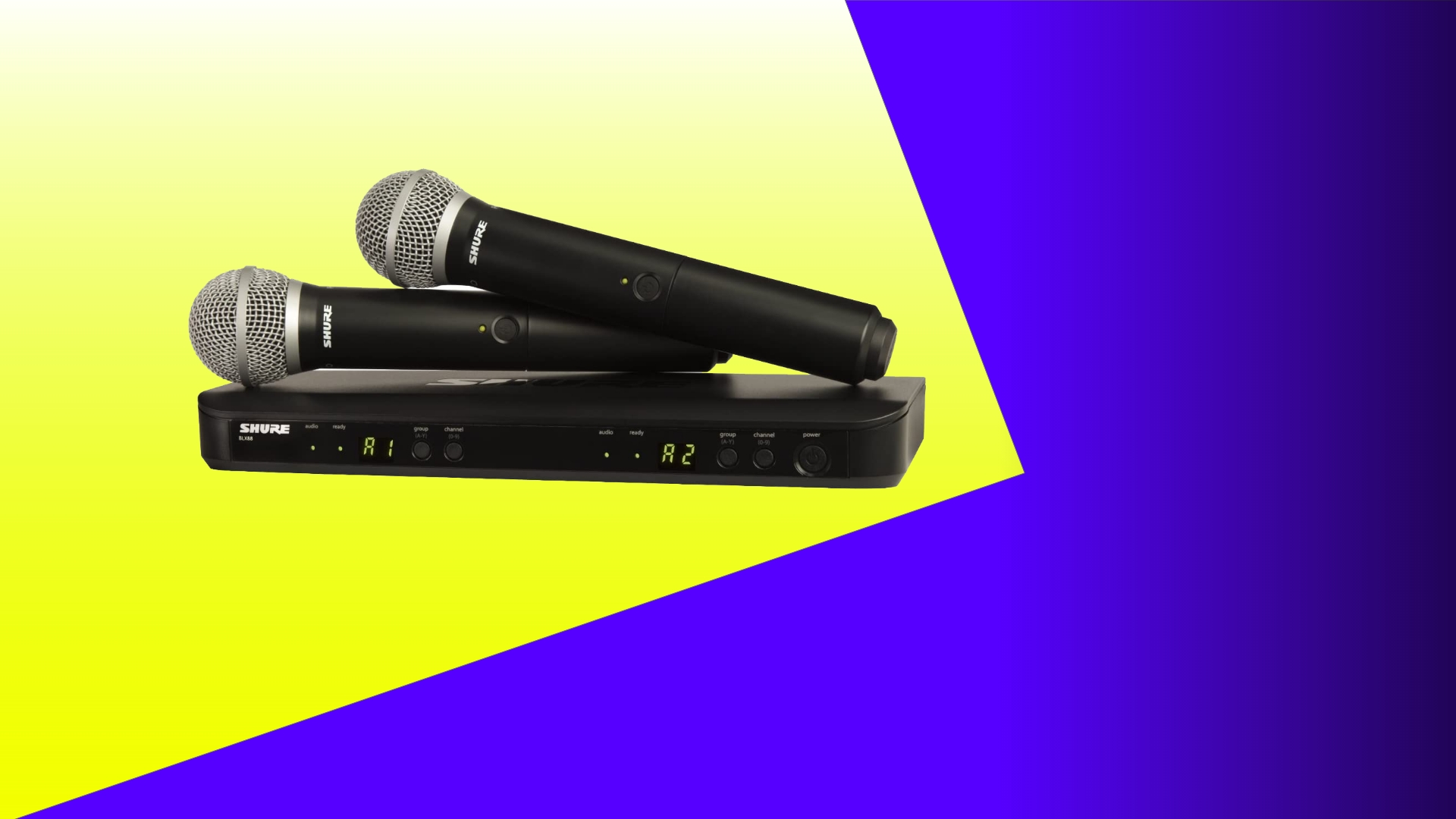


The Shure BLX288/PG58 microphone system is a wireless dual vocal system with two PG58 handheld transmitters and a BLX88 dual channel receiver. It is in contrast to the Shure GLXD24/SM58 microphone system, which has only one microphone, the famed SM58. With a maximum of 12 channels per frequency band, the BLX288/PG58 microphone system is flexible and expandable. This means that before you run out of channels, you’ll probably need to find a larger stage.
Despite the Shure BLX288/PG58 system having two PG58 transmitters, supporting more compatible systems, and being comparatively more affordable than the Shure GLXD24/SM58, it is still ranked below it. And there are reasons for that. The main one is that the SM58 microphone is a far better microphone than the PG58. It has a wider frequency range at lower frequencies, superior noise cancellation, and delivers more accurate and clean sounds.
That being said, the Shure BLX288/PG58 microphone system has a far greater range at 300 ft (line of sight). And for power, each PG58 transmitter uses a single pair of AA batteries, which gives them 14 hours of continuous use. This might be less than the 16 hours for the SM58 and its rechargeable lithium battery, but with the PG58, you can easily replace the AA batteries with the new ones when you run out. When using the SM58, however, you must first charge the battery and wait until it is completely charged before using it again. Plus, AA batteries are way cheaper than a lithium-ion battery, making the PG58 a more cost-effective option in the long run.
Now let’s talk about the receiver; the BLX88 dual-channel receiver operates on UHF and is equipped with QuickScan frequency selection, which quickly locates the best open frequency for interference-free operation. This feature is especially useful in crowded areas where there may be a lot of wireless devices competing for the same frequency. Additionally, the BLX88 is more easier to set up and use than most other wireless systems in the market.
Verdict
The Shure BLX288/PG58 microphone system is perfect for small to medium venues or events. It offers reliable sound quality and ease of use, making it a great choice for those who need a dependable wireless microphone system.
Moreover, its two handheld microphone sets mean that two performers can use the Shure BLX288/PG58 microphone system unit simultaneously. Or you can keep the extra mic for a backup singer, or as a spare. One thing we didn’t like about the PG58 microphone is that it has a higher impedance at 300Ω. This means the PG58 may face some loss of high frequencies at longer distances. However, this is not a major issue and can be easily solved by keeping the microphone closer to the source of sound.
In addition, the Shure BLX288/PG58 microphone system has a range of up to 300 feet, which is more than enough for most performance spaces. Its frequency response is also tailored to vocals, making it ideal for singers and speakers.
Overall, the Shure BLX288/PG58 microphone system offers great value for its price and is a reliable choice for those in need of a wireless microphone system for live performances, karaoke, etc.
Shure BLX288/PG58 Specifications
- Polar Pattern: Cardioid
- Connectivity: Wireless
- Battery Life: 14 hours
- Max Operating Range: 300ft
- Frequency Response: 60Hz – 15kHz
- Mic impedance: 300Ω
Pros
- Two PG58 microphones
- Easy to setup and use
- Good battery life
- Good sound quality
Cons
- PG58 microphones have a higher impedance
What’s included in the box?
BLX88 dual-channel receiver | 2 x BLX2 wireless handheld transmitters with integrated PG58 vocal microphones | 4x AA batteries (2 x for each transmitter) | 2 x microphone clips | Power Supply | User Guide
Sennheiser EW 100-835S
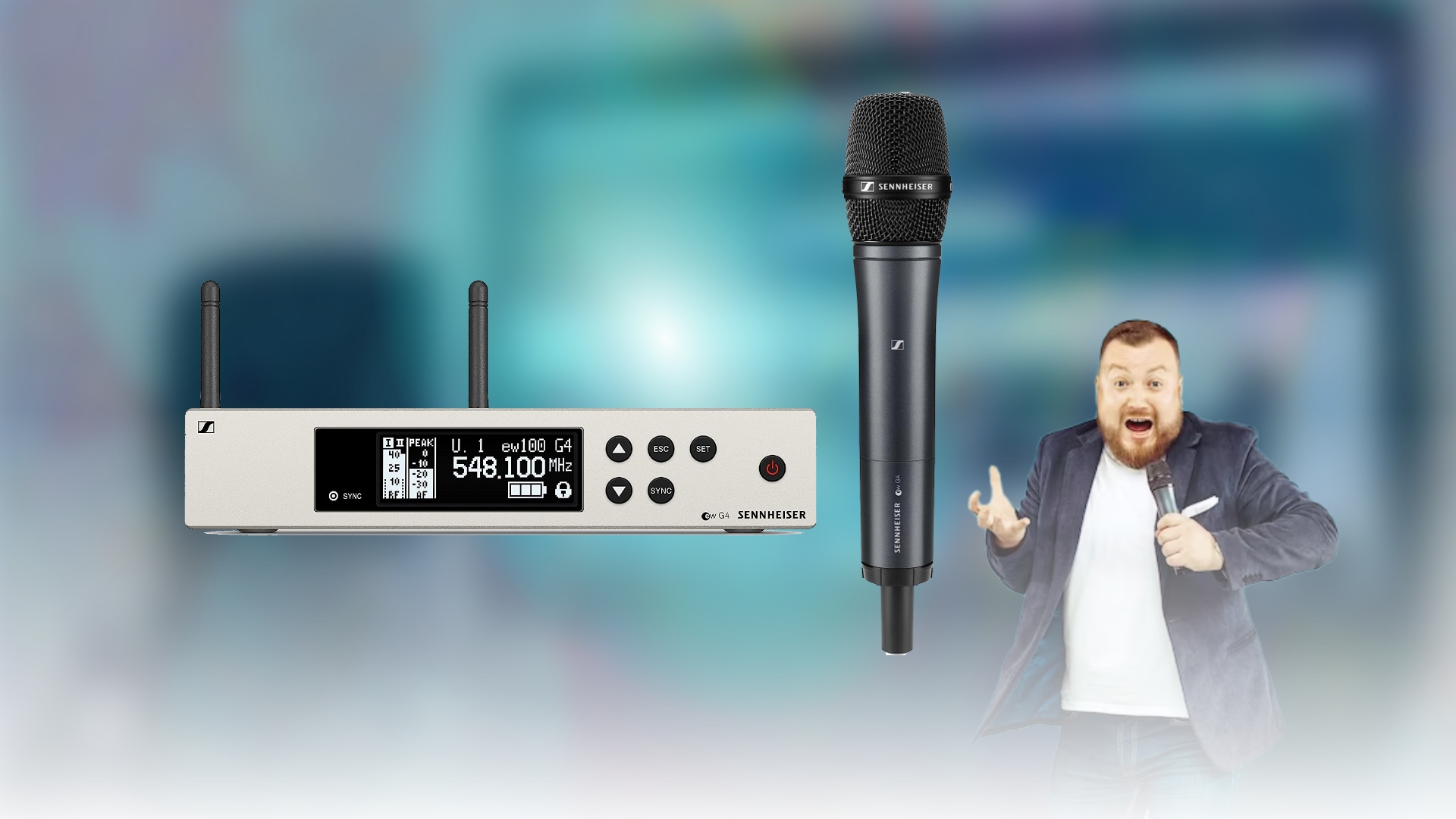


The Sennheiser EW 100-835S is a single-channel system that is also one of the best wireless microphones for singing or live performances. This microphone setup includes an SKM 100 G4-S handheld transmitter with an integrated mute switch, an E 835 cardioid dynamic microphone capsule, and an EM 100 G4 rackmount receiver with an intuitive LCD display.
This system, like the Shure GLXD24/SM58 and the BLX288/PG58, operates in the UHF range and has a line-of-sight range of up to 300ft. The EM 100 G4 receiver has a full metal body and an easy-to-read LCD screen that displays the frequency, channel, battery life, RF signal strength, and audio level. For connecting to various devices, it also has an unbalanced 1/4-inch output and a balanced XLR output.
Also, the receivers come in a rack-mountable casing, allowing you to easily and quickly link together up to 12 receivers and transmitters in one space for larger events and performances. The system has up to 20 compatible channels and a wide range of bandwidth options which gives you a large selection of frequencies to choose from. This ensures that you can find a clear and interference-free frequency for your audio transmission.
This Sennheiser E 835 mic provides a really clear and strong audio, plus it’s great at blocking out feedback sounds. It’s also got a mute switch so you can control your audio signal without messing with the radio frequency link. Additionally, the transmitter of this Sennheiser microphone system uses 2 AA batteries, just like the transmitters of the Shure BLX288/PG58 systems. But whereas the Shure system has a battery life of 14 hours, the Sennheiser system only has 8 hours.
Verdict
The Sennheiser EW 100-835S is also a versatile and reliable wireless microphone system, like the Shure GLXD24/SM58 and the BLX288/PG58. It delivers great sound quality, has a sturdy build, and offers easy setup and operation.
However, its shorter battery life may be a drawback for those who need longer performances without having to change batteries. Also, if you check the price, it is way more expensive than the Shure BLX288/PG58 and somewhere around the same price range as the Shure GLXD24/SM58. This makes it a less cost-effective option for some users.
But other than this, the Sennheiser EW 100-835S is a good wireless microphone system that deserves a spot among the best.
Sennheiser EW 100-835S Specifications
- Polar Pattern: Cardioid
- Connectivity: Wireless
- Battery Life: 8 hours
- Max Operating Range: 300ft
- Frequency Response: 40Hz – 16kHz
- Mic Impedance: 350 Ω
Pros
- Decent sound quality
- Mic has good feedback sound rejection
- Simple and easy to setup
- Can link up to 12 receivers and transmitters
- Upto 20 compatible channels
Cons
- Very Expensive
- Shorter battery life
What’s included in the box?
EM 100 G4 rackmount receiver | GA3 rack kit | SKM 100 G4-S handheld microphone with E 835 dynamic cardioid microphone capsule | RJ10 linking cable | Mic clip
BOYA BY-XM6-S2
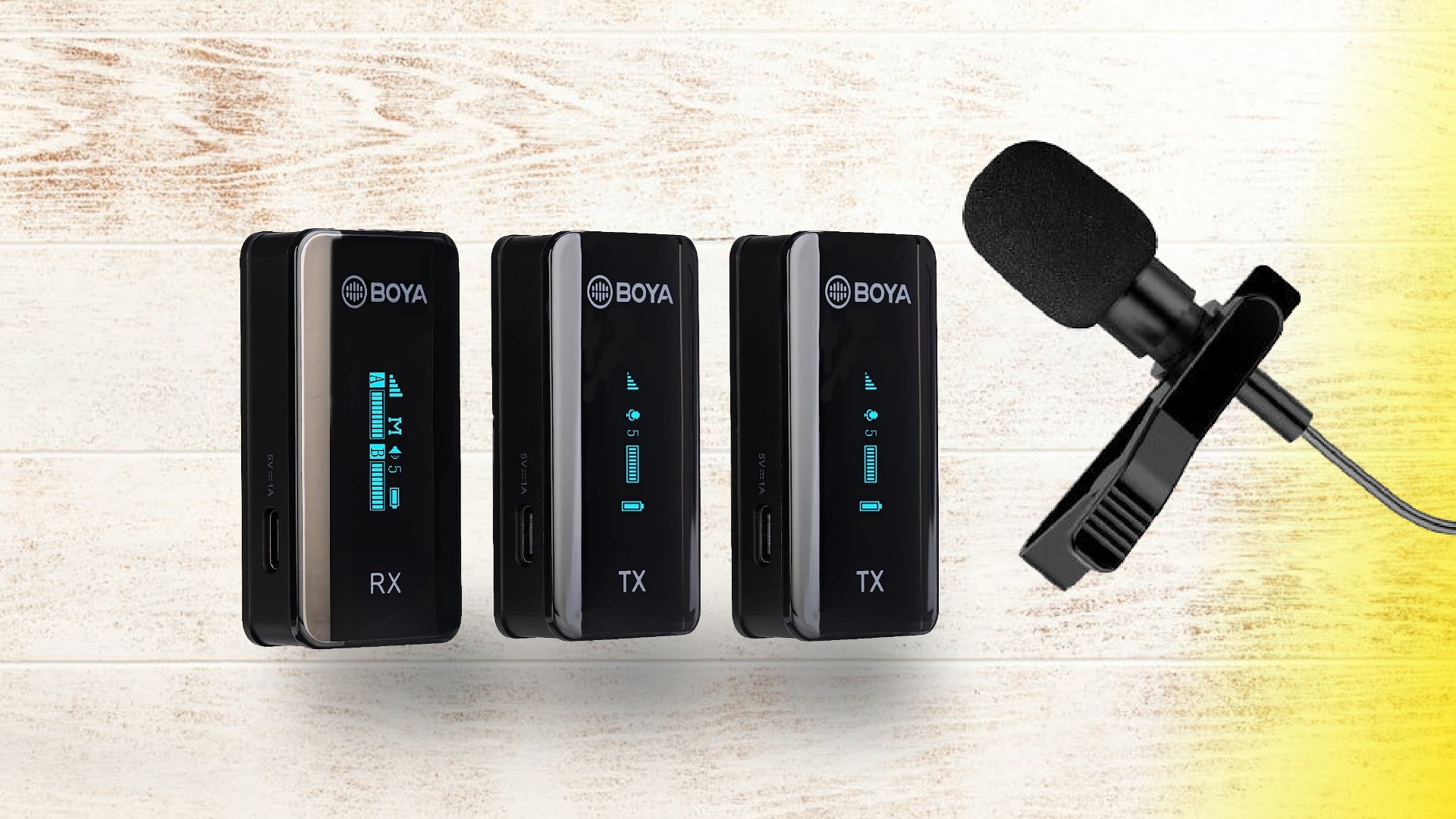


We’ve got the BOYA BY-XM6-S2, which is the second wireless lavalier lapel microphone entry on our list after the Rode Wireless GO II. It is a two-transmitter, one-receiver 2.4 GHz adaptive frequency hopping wireless microphone system. It has a low latency and a good signal-to-noise ratio.
This Boya kit is great because you don’t have to read a long manual to get the transmitters and receiver up and running – they come pre-paired in the case! Plus, each transmitter has its own built-in mic, so if you’re in a rush, you can just clip it to your subject and start recording their voice. They even come with lavalier mics for more discreet recordings.
Regarding distance, the Boya BY-XM6-S2 has a remarkable 100-meter (~330ft) line-of-sight range, which is more than sufficient for most situations. However, it’s important to remember that walls and other obstacles could mess with the effective range. Also, the battery can last up to 7 hours when fully charged, thanks to the rechargeable lithium-ion battery.
As for outputs, the Boya BY-XM6-S2 has both a 3.5mm TRS output and a 3.5mm TRRS output, so it’ll work with a bunch of different devices like DSLRs, smartphones, and tablets. Plus, it comes with a foam windshield to cut down on wind noise and a clip and carrying case, so you’ll be all set for any outdoor shoots.
Verdict
This Boya BY-XM6-S2 microphone system is really the best budget wireless microphone for YouTube vlogging, content creators, or filmmakers. Its dual-channel design and multiple output options make it versatile and compatible with a variety of devices. The included accessories also make it a great value for the price. Overall, if you’re looking for a budget-friendly wireless microphone system with great features, the Boya BY-XM6-S2 is definitely worth considering.
BOYA BY-XM6-S2 Specifications
- Polar Pattern: Omnidirectional
- Connectivity: Wireless
- Battery Life: 7 hours
- Max Operating Range: ~328ft
- Mic sensitivity: -39dB
- Frequency response: 35Hz – 18kHz
Pros
- Very low latency
- Good Signal-to-noise ratio
- Clean and clear audio
- Long transmission range
- Built-in mics in transmitters
Cons
- Battery life should be improved
- Might not be very durable or sturdy
What’s included in the box?
BY-XM6 RX Receiver | 2 x BY-XM6 TX Transmitter | 3 x USB-C Charging Cable | 2x Lavalier Microphone | 2x Mic Clip (for lavalier mics) | 2x Foam Windscreen (for lavalier mics) | 2x Fur Windshield for Built-in Microphone | 1x 3.5mm TRS to TRS Output Cable | 1x 3.5mm TRS to TRRS Output Cable
DJI Mic
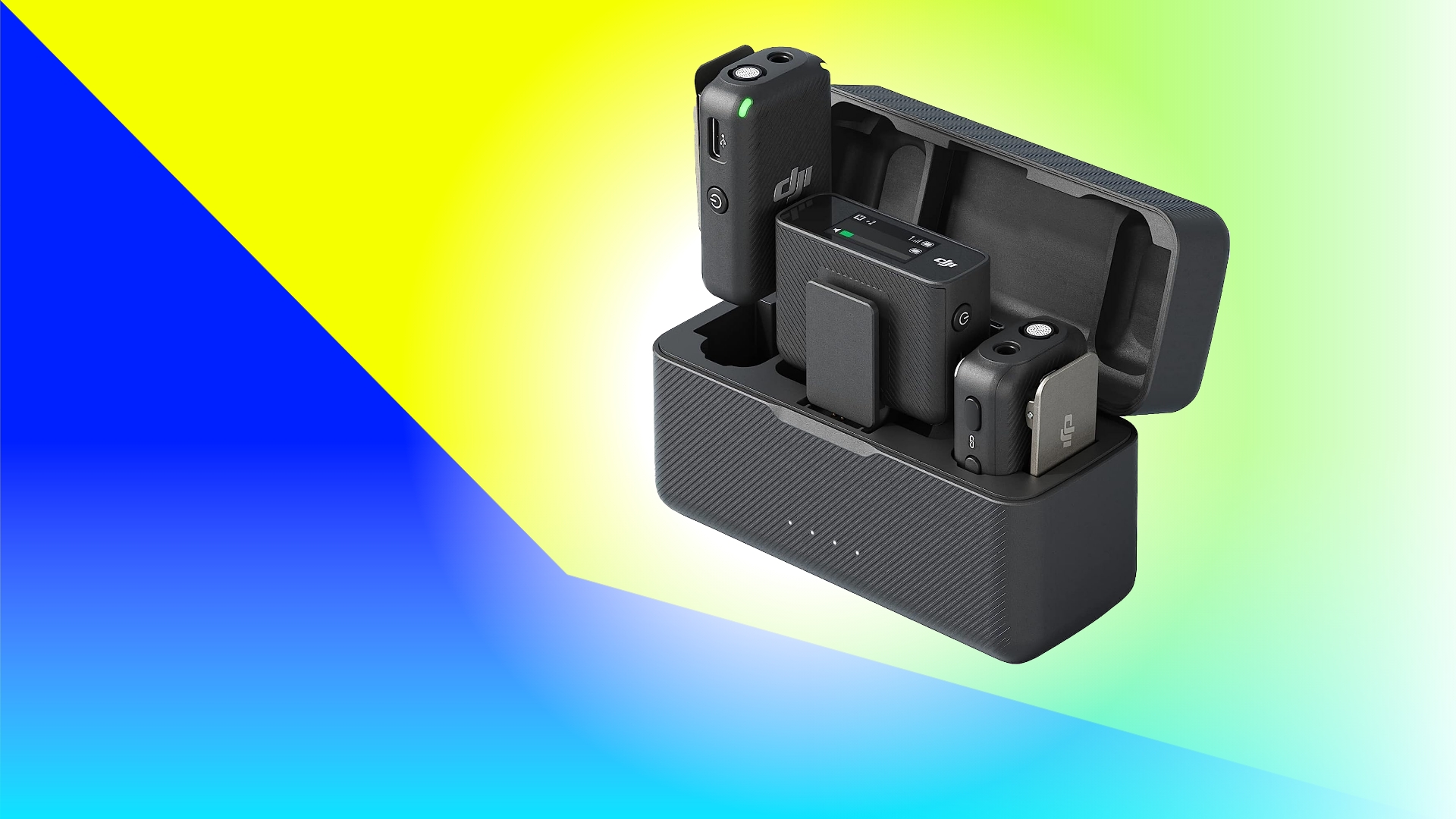


The DJI Mic is pretty compact and lightweight, just like all the other lavalier microphones. But DJI Mic is even more compact and lightweight than the Rode Wireless GO II or the BOYA BY-XM6-S2 lavalier microphones. Though this one comes in a dual-channel configuration, you’ll also find a single-channel variant.
The mics from DJI Mic are small but stylish, and they have magnets inside that you can use to fasten them to your clothes or accessories. They also include a mute button and an LED indicator that shows the battery level and connection status. Moreover, each microphone has an internal 8GB storage capacity that can store up to 14 hours of 48kHz, 24-bit audio without compression.
As for range, the DJI Mic boasts an impressive 250m (~820ft) line-of-sight range, making it perfect for outdoor shoots or events. It’s way more than the lavalier mics from Rode or Boya mentioned in this review article.
The receiver is similarly small and includes a built-in 0.95-inch OLED touchscreen for easy control of transmitter settings and access to information on brightness, volume, or battery life. It also has a headphone jack for monitoring audio in real-time as well as USB-C and Lightning ports for charging and file transfers with compatible devices.
The awesome thing about the DJI Mic is its charging case – it not only stores and protects the transmitters and the receiver, but it’ll also charge them up when you’re on the move. Each transmitter lasts up to 5.5 hours on a full battery, and the receiver can hold up to 5 hours, but the charging case gives you an extra 15 hours of battery life. This is so you won’t have to worry about running out of power when you’re recording in a remote area.
Verdict
The DJI Mic is ideal for mobile recording and broadcasting, making it ideal for journalists, vloggers, and content creators. Its compact size and simple design make it an excellent choice for those who need to record high-quality audio while on the go. The charging case also adds convenience and peace of mind, ensuring that you’ll always have enough battery life to get the job done. Despite all the great features, the price point may be a bit steep for some users. DJI Mic is more expensive than the Rode Wireless Go II, which is another popular option in the market.
DJI Mic Specifications
- Polar Pattern: Omnidirectional
- Connectivity: Wireless
- Transmitter Battery Life: 5.5 hours
- Receiver Battery Life: 5 hours
- Charging Case Battery Life: 15 hours
- Max Operating Range: ~820ft
- Operating frequency: 2.4 GHz
- Frequency response: 50Hz – 29kHz
Pros
- Very Compact and lightweight design
- Dual-channel recording
- Each transmitter has built-in 8 GB recording storage capacity
- Charging case has a 15-hour battery life
- Long range wireless transmission
Cons
- Relatively pricy
What’s included in the box?
DJI Mic Receiver | 2 x DJI Mic Transmitter | DJI Mic Charging Case | DJI Mic Camera Audio Cable (3.5mm TRS) | DJI Mic Mobile Phone Adapter (Type-C) | DJI Mic Mobile Phone Adapter (Lightning) | 2 x DJI Mic Windscreen | 2 x DJI Mic Clip Magnet | DJI Mic Carrying Pouch | DJI Mic Hot Shoe Adapter | Charging Cable | Instructional Manual
Conclusion
With so many wireless microphones on the market, it can be difficult to choose the right one for your needs. However, we have done the research for you and have narrowed it down to the top six options.
If you want a microphone system for live events, we recommend you choose between the Shure GLXD24R/SM58, Shure BLX288/PG58, and Sennheiser EW 100-835S. And if you are into vlogging, podcasting, interviews, etc., we recommend that you choose one of the wireless Lavalier lapel microphones. Ultimately, the right wireless microphone for you will depend on your specific needs and budget.
Recommended Reads:
- Best Wireless Headphones for Mac
- Best Wireless Earbuds for Small Ears
- Best Bose Wireless Headphones
- Best Center Channel Speakers for your Home Theater Systems

